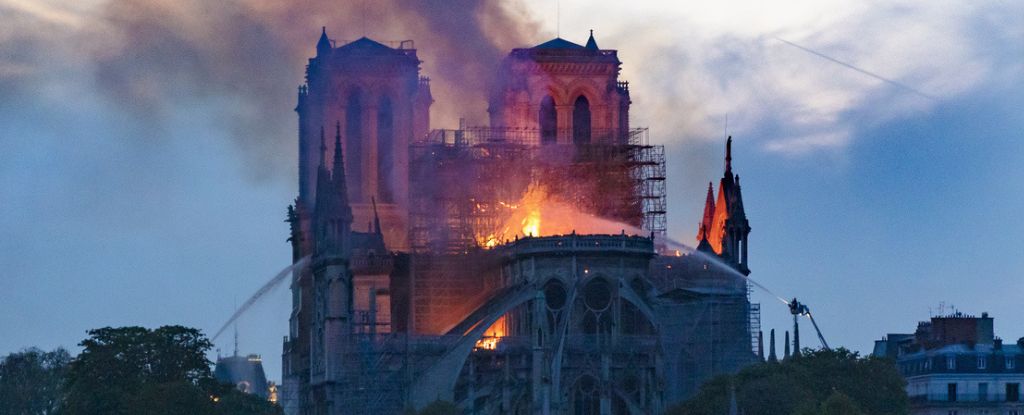Fire At Notre Dame Uncovers A Major Surprise Hidden In Its Architecture
The fire at Notre Dame uncovers a major surprise hidden in its architecture. The fire that ravaged Notre Dame in 2019 revealed a surprising feature in the cathedral's architecture.
Author:George EvansMar 21, 202325 Shares650 Views

The fire at Notre Dame uncovers a major surprisehidden in its architecture. The fire that ravaged Notre Dame in 2019 revealed a surprising feature in the cathedral's architecture.
During the reconstruction efforts, researchers discovered that the cathedral's roof contained a large quantity of lead. It is believed that this lead was used to hold together the stained glass windows, as well as for other structural purposes.
One of the most significant findings was the discovery of a large quantity of lead in the cathedral's roof. It is estimated that approximately 460 tons of lead were used in the roof and spire of Notre Dame.
This lead was used to hold together the stained glass windows and for other structural purposes. The lead in the roof melted during the fire and released toxic fumes into the air, which posed a health risk to those in the surrounding area. The cleanup efforts had to be carefully monitored to ensure that workers were not exposed to dangerous levels of lead.
The discovery of the lead in the roof of Notre Dame has raised concerns about the potential health risks posed to those who were exposed to the toxic material during and after the fire.
The cleanup efforts have been carefully monitored to ensure that workers are not exposed to dangerous levels of lead, and measures have been put in place to protect the surrounding area from contamination.
In addition to the lead, researchers also discovered that the cathedral's spire was built with wood from the 13th century. The spire was added to Notre Dame in the 19th century during a major renovation. The discovery of the ancient wood helped to shed new light on the history of the cathedral and its construction.
Other discoveries made during the reconstruction efforts included the identification of new sources of stone to replace the damaged stone in the cathedral's walls. The stones used in the original construction of Notre Dame came from quarries that are no longer in operation, so finding suitable replacement stones was a significant challenge.
The reconstruction efforts also uncovered new information about the cathedral's architecture and construction techniques.
For example, researchers discovered that the flying buttresses that support the walls of Notre Dame were not originally part of the design. They were added to the cathedral several decades after it was built to help support the weight of the walls and prevent them from collapsing.
Notre Dame
Notre-Dame de Paris, also known as Notre Dame Cathedral, is a medieval Catholic cathedral located in the heart of Paris, France. It is one of the most famous and beloved landmarks of the city, attracting millions of visitors each year.
Construction of Notre Dame began in 1163 and was completed nearly 200 years later, in 1345. The cathedral is known for its stunning Gothic architecture, including its iconic twin towers, rose windows, and flying buttresses.
Final Words
Overall, the discoveries made during the reconstruction of Notre Dame have provided valuable insights into the history and architecture of this iconic structure. The restoration efforts are ongoing, and it is hoped that Notre Dame will be restored to its former glory in the years to come.
Jump to

George Evans
Author
George Anderson, an exceptional architectural designer, envisions and brings to life structures that transcend the realm of imagination. With an unwavering passion for design and an innate eye for detail, George seamlessly blends form and function, creating immersive spaces that inspire awe.
Driven by a deep appreciation for the interplay of space, light, and materials, George's innovative approach redefines the possibilities of architectural design. His visionary compositions leave an indelible mark, evoking a sense of wonder and transforming the built environment.
George Anderson's transformative designs and unwavering dedication continue to shape the architectural landscape, pushing the boundaries of what is possible and inspiring generations to come.
Latest Articles
Popular Articles